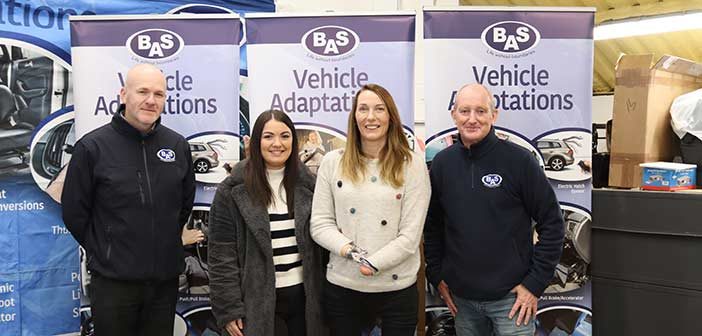By Helen Dolphin MBE
BAS ambassador Helen Dolphin MBE puts some questions to Bill Bradley from Vehicle Adaptation Specialists BAS on how best to look after your car in isolation.
Like many disabled people I’ve already been in self-isolation for a month. This means my car has sat outside my house and hasn’t been driven anywhere. Other disabled people may be using their car for essential shopping and key work. However, not going on any journeys of significant distance, or not using a vehicle at all for such a long period of time could be a cause for concern. I’ve therefore put some questions to vehicle expert Bill Bradley on how best to look after our vehicles in self-isolation. I hope you find the answers helpful and like me are looking forward to getting out and about again once lock down is over.
Q/I haven’t been near my car for several weeks. Is there anything I can do now to make it more likely to run better once I can drive it again. I’ve read that I should put a cover over it, will this help?
A/ Putting a cover over your vehicle will make little or no difference to the mechanical or electrical performance of your vehicle, but what it will do is stop birds pooping on your vehicle’s paintwork, which at this time of the year when the birds are nesting and the females fattening up, is very prevalent and the acids in the bird droppings can cause serious damage to vehicles paintwork, so if you are not using a cover this needs cleaning off your vehicle regularly.
Q/ Should I leave the handbrake on or off?
A/ Off if safe to do so. When the vehicle is left for a considerable amount of time with the handbrake on, often the rear brake shoes/pads tend to stick to the brake discs/drums and can cause binding of the brakes, especially if we have both rain and sun over the lay-up period. So, if you are parked on level ground and the vehicle is an automatic, place the gear selector in park or if the vehicle is a manual select 1st gear.
Q/ Is it better to leave my car with a full or empty tank?
A/ Either or, it really doesn’t matter.
Q/ I’m only doing a short drive to the shops once a week to pick up my essentials, is this going to affect the battery?
A/ Generally on newer vehicles this is not an issue, but try to avoid using lots of electrical accessories when it is safe to do so. Examples would be the heater blower, rear screen heater and any type of charger. Also, it would be advisable to unplug/disconnect any chargers or accessories that are connected to the vehicle’s electrics. If you have a WAV (Wheelchair Accessible Vehicle) with multiple accessories fitted you may be able to disconnect them. Speak to your supplying vehicle adaptation company for assistance.
Q/ I’m not using my car at all. Will my battery survive? If not is there anything I can do to prevent my battery dying?
A/ If you can, start the vehicle once a fortnight and run for around 15 to 20 minutes as this will help keep the battery charged. Don’t turn on any accessories such as the heater blower or rear screen heater at this time
Q/ What should I do if my car won’t start?
A/ Contact your breakdown company if you have one or supplying dealership or maybe a neighbour who has a set of jump leads and can assist you if the battery is flat.
Q/ Once I can drive my car again what checks should I make?
A/ Firstly just check tyres are inflated and any damage to the vehicle’s lights. If possible, check the engine fluid levels. Before driving the vehicle, familiarise yourself with all the controls and adaptations if fitted.
Q/ Are my driving adaptations likely to be affected by a long period of not driving?
A/ No, they will be absolutely fine.





1 Comment
Pingback: Looking after your car in isolation – Gary Skentelbery – SelfIsolation.io is for sale